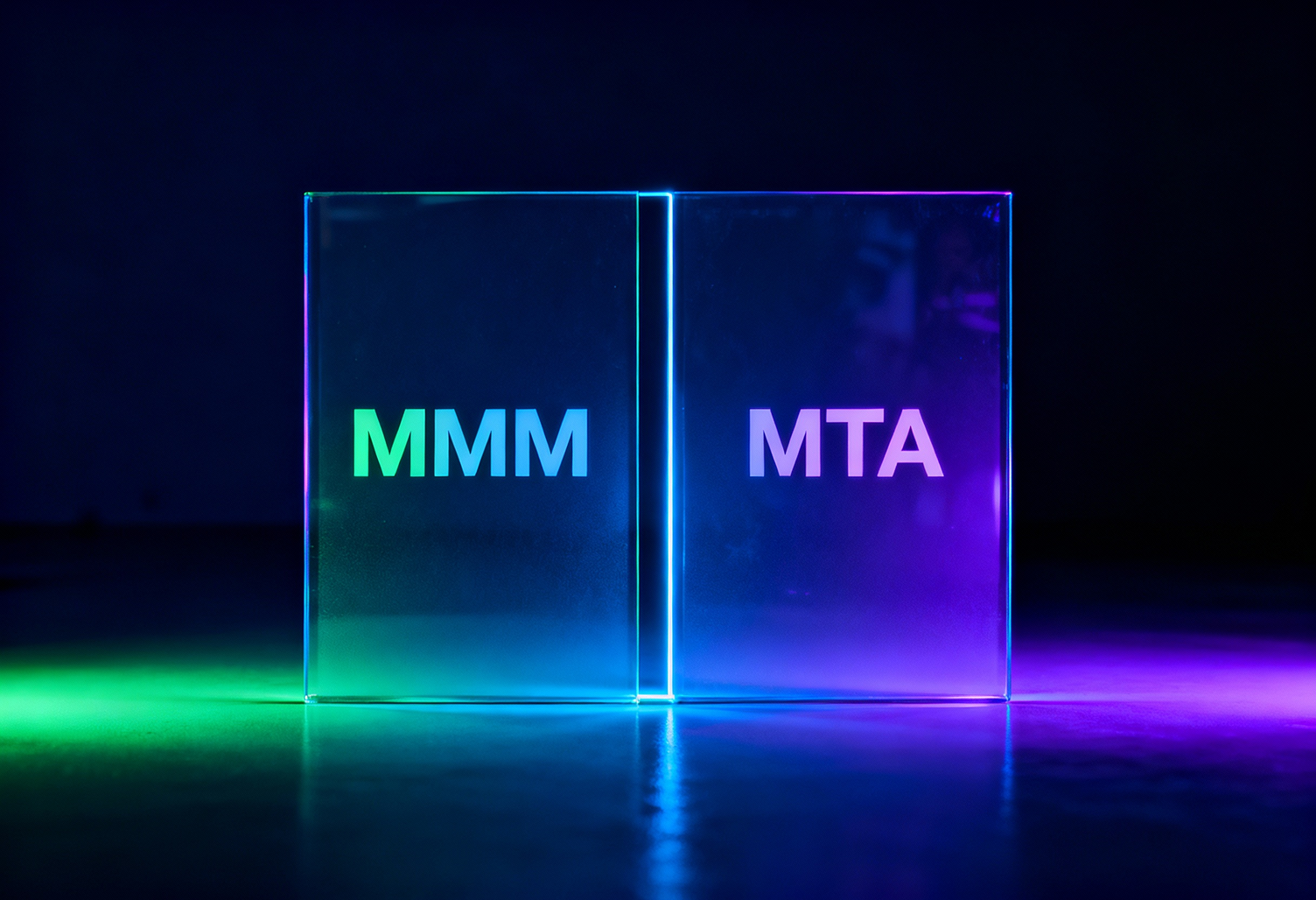Influencer marketing has evolved from creativity-led to data-driven
As brands demand clearer ROI, two measurement frameworks have become central to evaluating the impact of influencer campaigns:
- Marketing Mix Modeling (MMM)
- Multi-Touch Attribution (MTA)
Both are powerful — but they measure different types of influence, operate on different time horizons, and produce different insights. Misunderstanding MMM vs. MTA leads brands to misread influencer performance entirely.
This article provides a clear comparative analysis of MMM and MTA, explains how each captures influencer value, and outlines how the two frameworks work together to create a complete measurement picture.
1. Why Influencer Measurement Is Unusually Complex
Influencers don’t behave like traditional digital channels. Their impact is:
- non-linear
- multi-platform
- social
- cultural
- emotional
- delayed
- amplified across dark social
- often offline
But attribution models were originally built for:
- clicks
- cookies
- ad impressions
- deterministic paths
Influencers work through invisible, nonlinear influence pathways, many of which MMM and MTA capture differently.
2. What MMM Measures (and Why It Matters)
Marketing Mix Modeling (MMM) is a top-down statistical model analyzing all marketing inputs over time to estimate their contribution to sales.
What MMM captures well
A. Long-term effects
MMM excels at detecting lagged influence, such as:
- rising brand search
- increased retail sales
- long-term LTV lift
- consistent baseline growth
- memory effects
This is where influencers are especially powerful.
B. Cross-channel synergy
MMM quantifies how influencer activity boosts:
- search
- paid social
- direct traffic
- retail sales
- referral behavior
Influencers often lift other channels — MMM captures this.
C. Offline + online combined impact
MMM integrates:
- retail POS data
- subscription renewals
- brand awareness waves
- in-store lift
Crucial for omnichannel brands.
D. Diminishing returns + optimal spend
MMM shows:
- how much influencer activity is efficient
- when it saturates
- how to reallocate spend optimally
Ideal for annual planning.
Where MMM struggles
- Requires long time-series data
- Less accurate for small brands or short campaigns
- Cannot measure individual creator performance
- Cannot evaluate specific content pieces
MMM is powerful — but high-level.
3. What MTA Measures (and Why It Matters)
Multi-Touch Attribution (MTA) is a bottom-up, user-level model assigning fractional credit to every touchpoint in a conversion journey.
What MTA captures well
A. Directly trackable actions
MTA sees:
- clicks
- swipes
- site visits
- email opens
- ad impressions
- retargeting sequences
High granularity.
B. Creator-specific impact
With UTMs, codes, and trackable links, MTA can measure:
- which creators drove conversions
- which formats performed best
- which funnels worked
Excellent for tactical optimization.
C. Short-term performance
If a creator drives immediate conversions, MTA captures it perfectly.
Where MTA struggles
- Cannot track dark social
- Cannot measure offline impact
- Cannot quantify long-term influence
- Breaks when privacy tools limit tracking
- Overweights last-click
- Undervalues top-of-funnel creators
MTA is useful — but incomplete.
4. MMM vs. MTA: What They See Differently in Influencer Marketing
Here is a structured comparison:
A. Time Horizon
MMM
- Long-term (months–years)
- Strength: brand equity + retention
- Limitation: slower insight cycles
MTA
- Short-term (hours–weeks)
- Strength: conversion paths
- Limitation: overweights direct clicks
B. Influence Type Captured
Direct clicks
Dark social
Offline sales
Long-term brand lift
Short-term conversions
Cross-channel synergy
C. Creator-Level Attribution
Individual creator ROI
Content-level performance
Multi-creator synergy
D. Data Requirements
Long historical data
User-level tracking
Privacy-resistant
- MMM: Very strong
- MTA: Very weak
Retail integration
5. How MMM and MTA Complement Each Other
Used together, MMM + MTA unlock a complete 360° view of influencer impact.
1. MTA identifies short-term winners
- best creators
- best posts
- best formats
- best days/times
- best funnels
Critical for performance teams.
2. MMM quantifies long-term + ecosystem impact
- search uplift
- retail uplift
- LTV uplift
- halo effects
- lagged sales
Essential for strategic planning.
3. Hybrid Models Combine Both
Leading brands now merge MMM + MTA using:
- Bayesian hierarchical models
- econometric fusion
- identity-resolution pipelines
- incrementality testing
- creator indexing
This creates a unified measurement system:
short-term attribution + long-term contribution.
6. Use Cases: When to Use MMM vs. MTA
Use MMM When:
- you have retail presence
- you invest across many channels
- you need budget planning
- you run always-on influencer programs
- your goal is brand lift, not only conversions
Use MTA When:
- you need creator-level performance data
- you optimize content types
- you run direct-response campaigns
- you have strong UTM discipline
- you want rapid feedback loops
Use BOTH When:
- running large-scale influencer programs
- using macro + micro creators
- targeting both long-term & short-term outcomes
- operating across multiple platforms
- needing full-funnel visibility
Most sophisticated brands rely on both MMM + MTA.
7. The Future: Influence Measurement Will Be Hybrid
By 2026, the industry is moving toward:
- unified influence graphs
- cross-platform identity mapping
- MMM + MTA fusion models
- creator authority scoring
- network-based attribution
- dark social estimation
- sentiment-weighted influence modeling
Creators will no longer be judged by clicks alone — but by ecosystem impact.
Influence is:
- multi-touch
- multi-platform
- multi-channel
- long-term
Measurement must reflect this reality.

